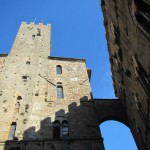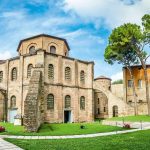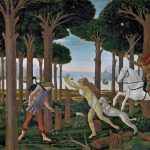Spend one day in a bygone era!
A Mosaic of Ravenna: A Picture-Perfect City
Check out my ultimate to-do list.
by Holly Fizer
Visiting Ravenna is not just a beautiful adventure in the present, it also serves as a reminder of the past. From the picturesque buildings with pretty, painted colors to the older churches with mosaics lining the interior. Despite the cloudy sky, Ravenna was still a sight to behold. I hope to return to Ravenna in the summer to see the beautiful colors come to life in the sunshine. But even on a gloomy, windy day in January, Ravenna proved itself a worthy visit.
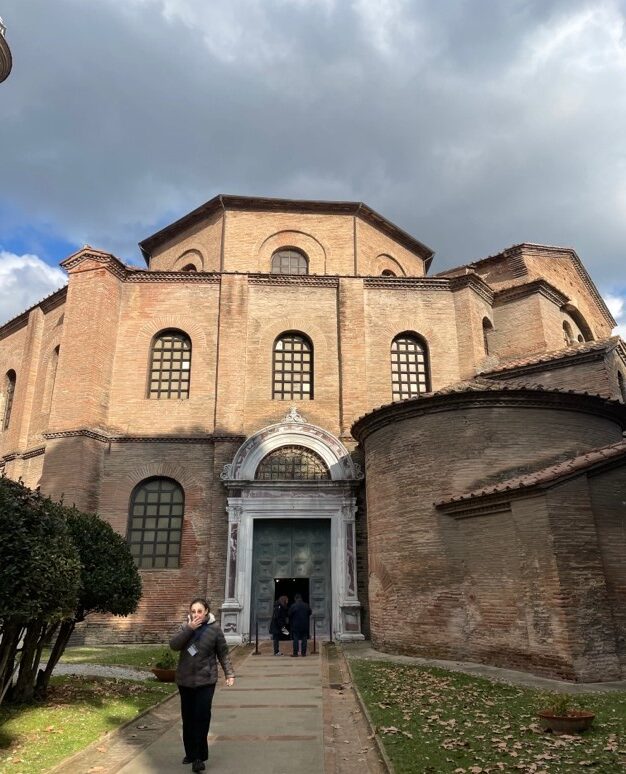
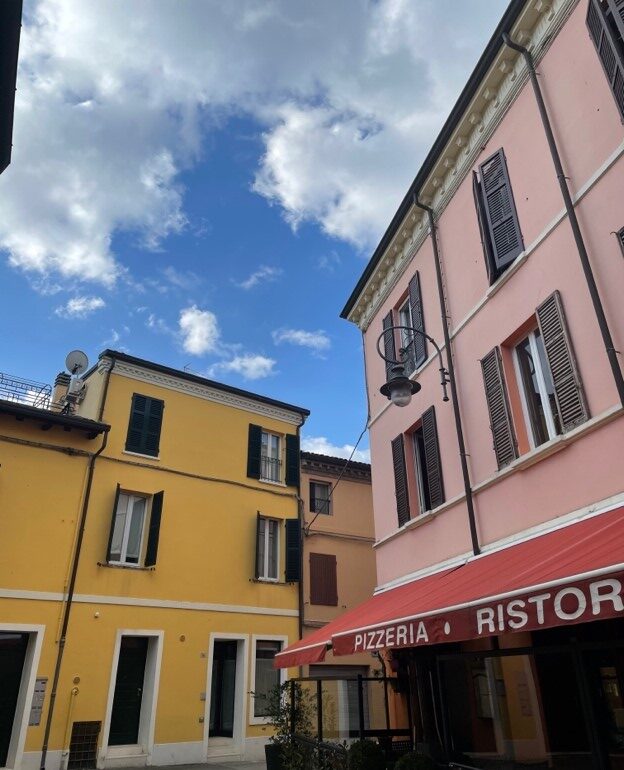
On the Saturday I visited, people strolled through the streets of the city heading to lunch or just for a walk in the city. Being a tourist in the city, the churches and mosaics were at the top of my to-do list. I could drone on for hours about the beautiful mosaics and architecture of the city, but instead I will look towards the best locations and art I found in Ravenna.
Basilica di San Vitale
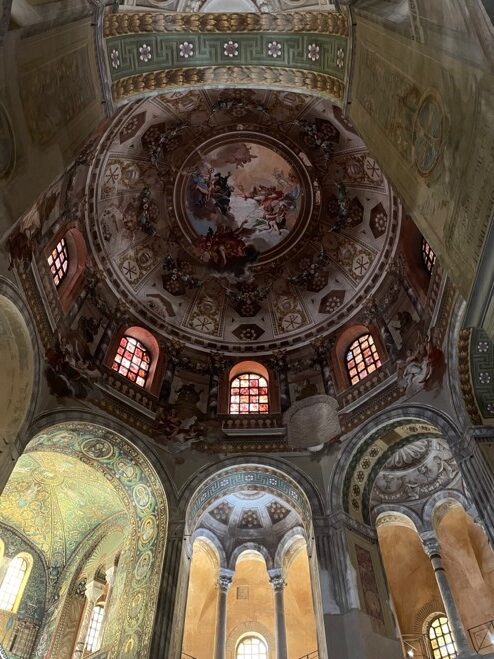
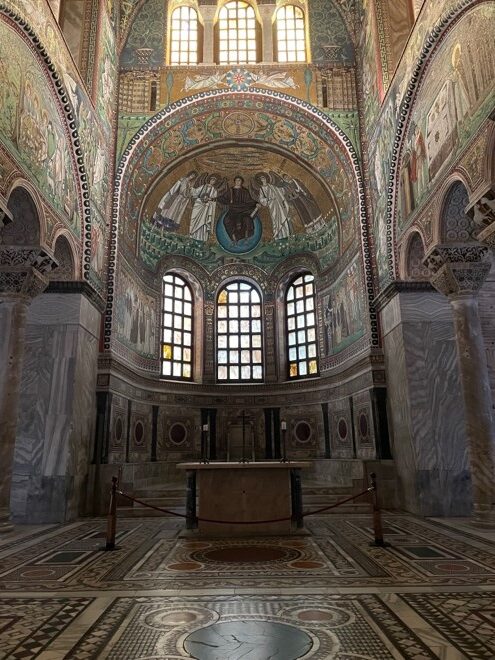
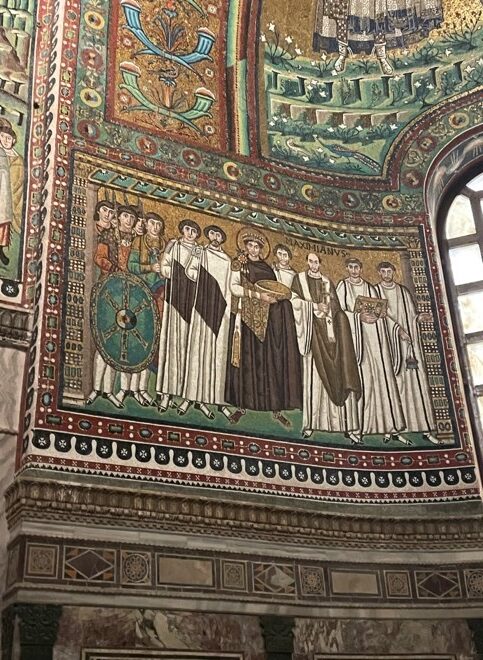
One of the first locations we stumbled upon was the complex containing the basilica di San Vitale and the Mausoleo di Galla Placidia. Having studied Roman emperors, the Basilica di San Vitale was at the top of my list of sites to visit. To the left of the altar at the front of the church is a depiction of the Emperor Justinian the Great. Across from him on the opposite wall is a mosaic containing the image of his wife, Theodora. I had seen these images in history books and online, but viewing the beauty of the mosaics in person was breathtaking. Possibly the best view inside of the basilica is the ceiling. The dark reds and browns in the image allow the ceiling to truly come to life as you gaze up at it. Photos do not do the mosaics and imagery of this basilica justice. Even the mosaics of the floor delighted the eyes of every tourist I saw venturing through the church. The basilica is a remarkable sight for both history buffs and art connoisseurs hoping to catch a glimpse of the true beauty Ravenna has to offer within its walls.
Mausoleo di Galla Placidia
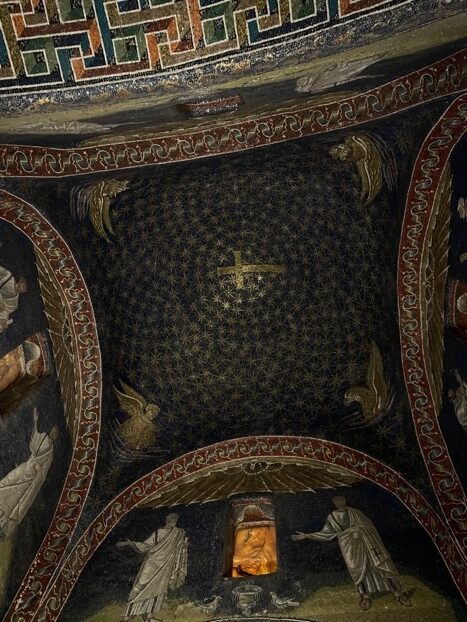
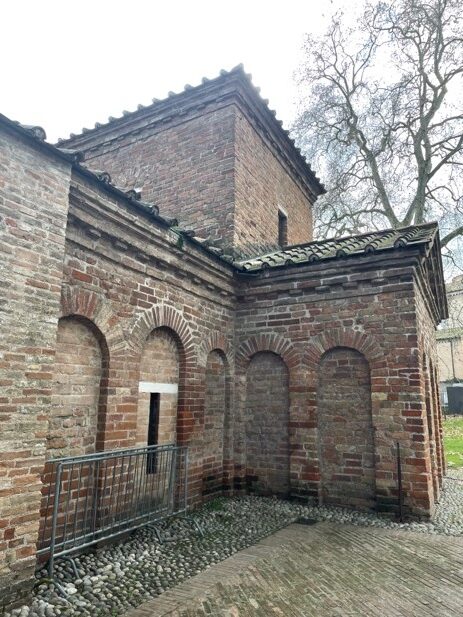
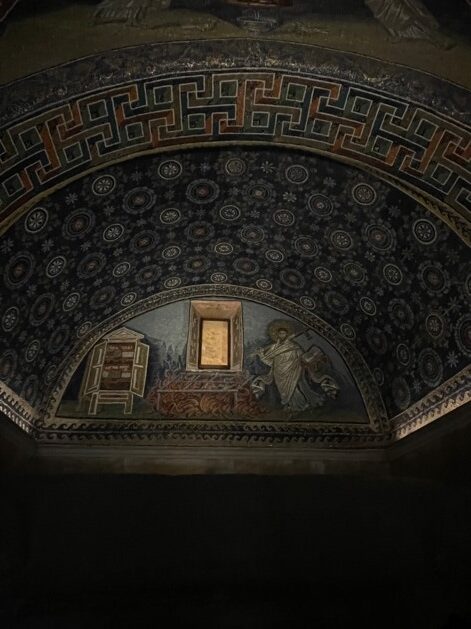
Just behind the Basilica is this mausoleum. On the outside, the building is small and made of brick. The unassuming exterior hides the greatest treasure within its walls. The building was commissioned by the Empress Galla Placidia in the 5th century. Despite not being buried there as she had intended, the mausoleum hosts some of the best mosaics in Ravenna. The starry sky and religious imagery that covers the ceiling brings the mausoleum to life. The mausoleum houses three marble sarcophagi. No one took the mausoleum as their final resting place in the end, but had they, the starry roof staring down would have been a beautiful place to rest. Images of animals, religious figures, crosses, and Christ with his sheep, adorn the vault of the mausoleum. Despite a lack of artificial lighting within the mausoleum, the images come to life as you enter and admire the beautiful night sky. The small windows of a rock, almost marble like material cast the room in an orange light that truly changes the view of the room. This mausoleum inspires with its beautiful hues and impeccable craftsmanship. Do not be fooled by the outside brick and mortar; the mausoleum is dazzling.
Dante in Ravenna
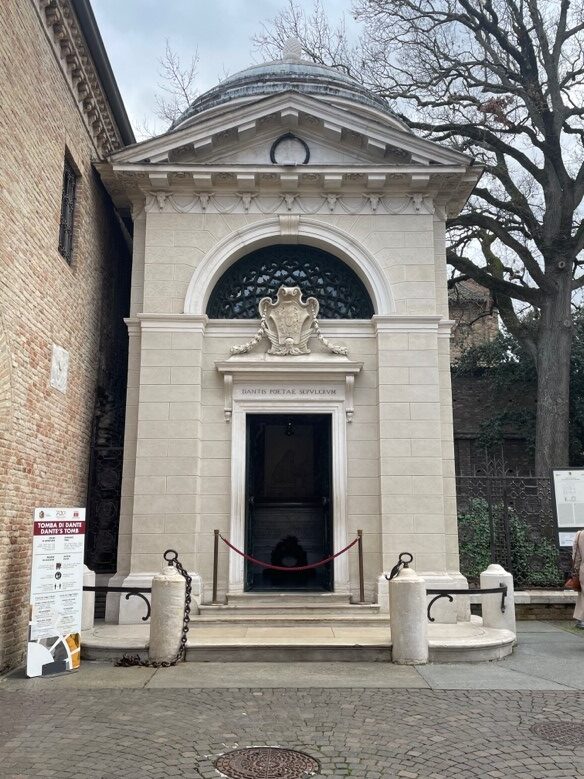
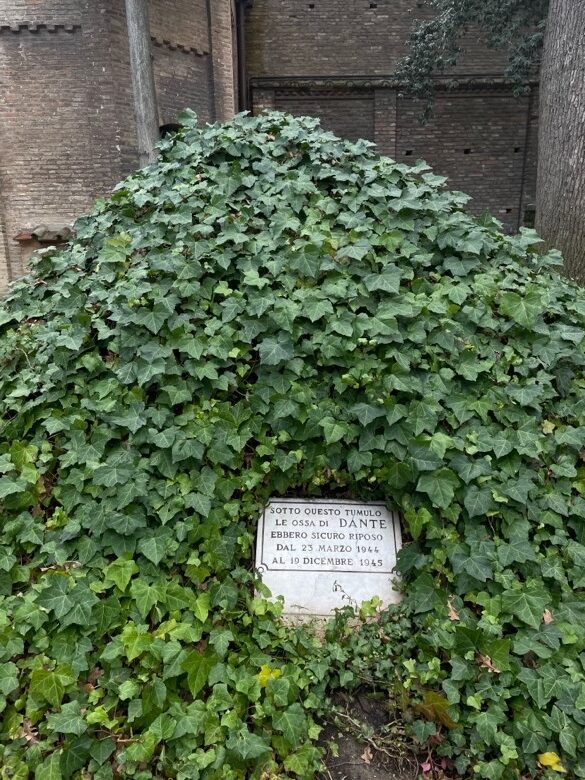
One location you simply cannot miss is the Tomb of Dante. Visiting the final resting place of the famed Italian poet Dante Alighieri is an incredible experience to have. His grand tomb sits next to the Basilica of San Francesco. With a grand white façade and beautifully detailed interior that lies just beyond the red velvet rope, Dante’s tomb is a must-see in Ravenna. His Divine Comedy written in Italian helped shape history and create an image of Hell and Paradise that persists in minds today. While not everyone may have read his writing, its contents and importance are well-known by all. And to my surprise, just behind the tomb is a large mound of foliage with a plaque denoting the place Dante was buried from March 23rd, 1944 until December 19th,1945 during the Second World War to prevent his body from being harmed or stolen. While Florence, the city he was born in, and Ravenna, where he died, may not agree on where he should be laid to rest, seeing his tomb and knowing of the life of the poet is incredible. And the gardens just behind his tomb are a lovely complement to the structure where he now rests.
The Streets of Ravenna
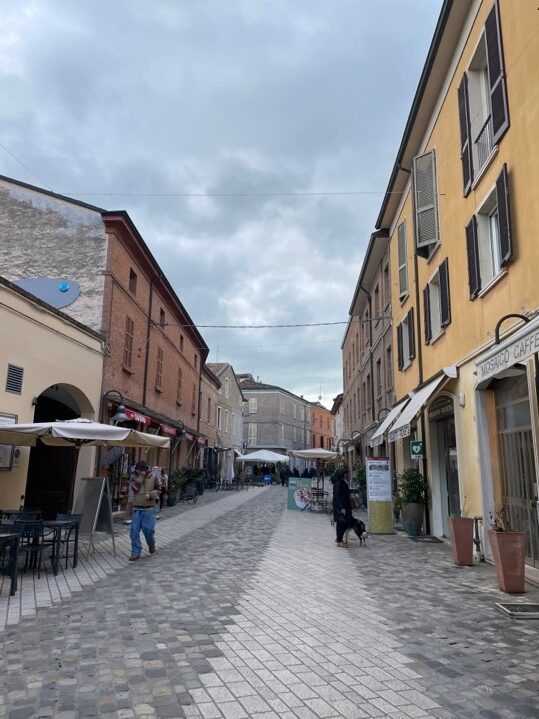
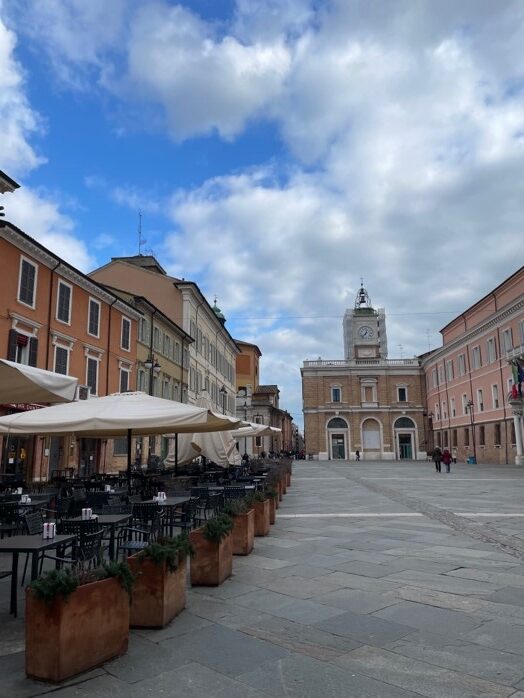
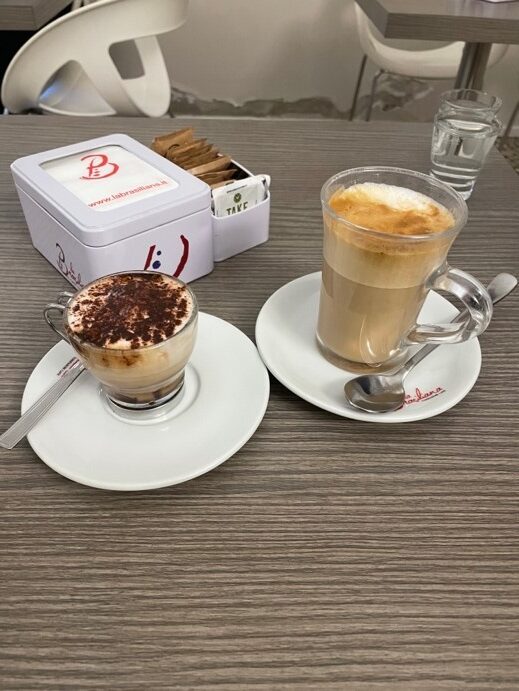
While wandering the streets of Ravenna, we noticed many restaurants and cafes. Our favorite café for a coffee break was Etna Café just across the street from the Basilica di Sant’Apollinare Nuovo, another great basilica to visit. Not only was the barista incredibly kind and helpful, but the coffee was incredible and the perfect pick-me-up after a day of walking around Ravenna.
Even if your day in Ravenna takes you on a walking tour, every street and piazza there is beautiful for taking pictures. Seeing the basilicas is a must, but so is exploring the city while you are there. Tasting local dishes and watching the world go by from a restaurant on a piazza is just as incredible as any mosaic. For example, an additional highlight of my day was a beautiful white dog we saw outside several basilicas as their owners went inside. Ravenna is not only a gift for its beauty but also for its people and animals that live there.
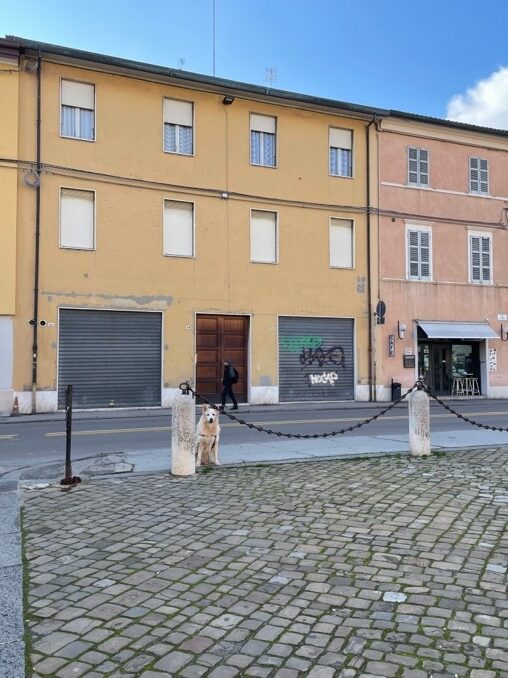
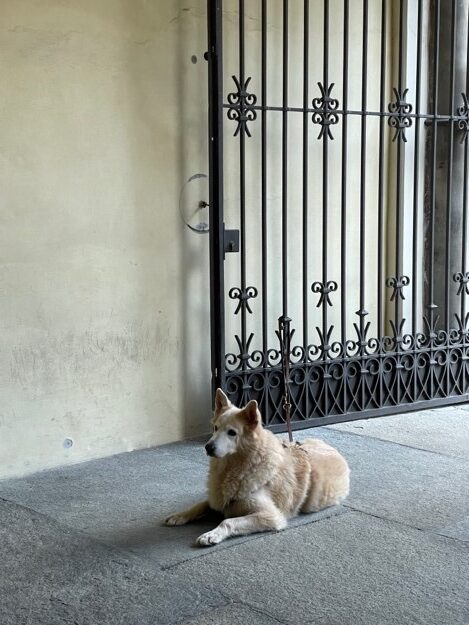
👉 Holly Fizer is a US student of University of Indiana University studying Italian at BCSP Bologna

